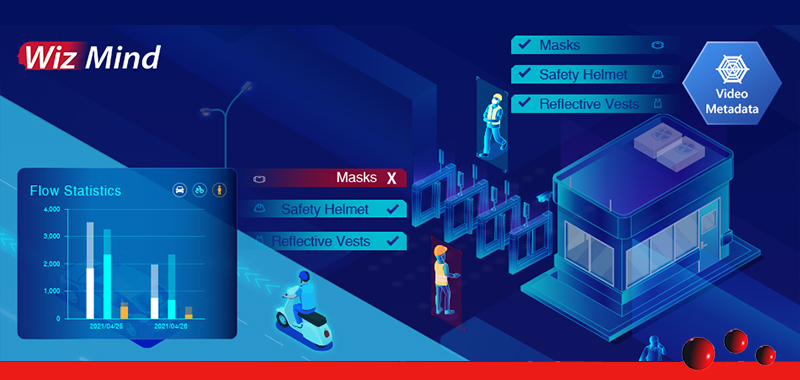Human detection is a computer vision-based artificial intelligence technology often employed in security surveillance. It…

In the context of surveillance monitoring, video metadata refers to structured details that can be extracted from video footage. It provides information about other data. Therefore, human-based video metadata is data derived from human targets in a monitored scene. It can be effectively used to enhance the operations and management of various application scenarios, whilst carefully respecting and maintaining people’s privacy. Let’s take a look at three application scenarios of human-based video metadata that can be adopted based on specific monitoring requirements.
1. Searching for targets and generating stats
One of the most common application scenarios of human-based video metadata is for human target searching after an event. Intelligent surveillance devices, such as the Dahua Technology WizMind products, offer functions that can locate suspects based on their physical attributes, e.g. beard, glasses, mask, hat, etc. These target attributes are continuously increasing to meet various application scenario requirements. Irrelevant targets in captured images are also filtered out by the backend devices or by the platform.
Another useful application of human-based video metadata technology is for generating target stats. WizMind, for example, counts human targets in real-time in a monitored scene and filters them based on target category and direction. It also generates reports by year, month or day.
2. Detecting personal protective wear (PPE)
Wearing PPE is a must for any construction site and during COVID times, but can be a challenge to implement. The latest PPE detection technology from Dahua WizMind can detect the wearing of commonly-used PPEs in construction sites (e.g. safety hats, protective vests, face masks and glasses) and it can even detect the colour of the uniforms (top and bottom) of workers. When a violation is detected, the site supervisor or manager is notified, who can then address the violator.
3. Aiding city road planning
Stats relating to people on the street can be very useful in city road planning. By collecting attributes of pedestrians, directions and time periods, city road planners can design better roads for all road users. Human-based metadata of pedestrians can be captured and then securely transferred to an SFTP server for further analysis. The data summary is then used to assist in city road planning.
There you have it – human-based video metadata can be effectively used to optimise various application scenarios. For more information on human-based video metadata applications, get in touch with us.



